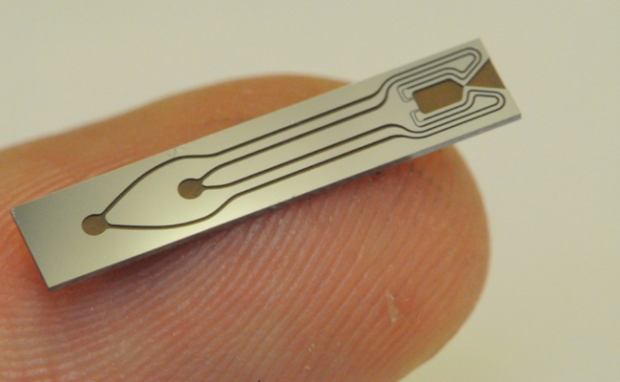Nano rocket thruster uses water as fuel
Imperial College London researchers created a minuscule rocket engine that uses water as fuel. Science research website Interesting Engineering uses a special thruster that uses electrolysis, which splits water into hydrogen and oxygen. Then, these gases propel the rocket thrusters. Soon, this unique thruster could become a more efficient propulsion system for future rockets.
The rocket engine’s “nano” because it is smaller than a fingertip. Yet, ICL researchers believe they could create larger ones that could become a more practical means of moving spacecraft. More importantly, we might be able to repurpose the technology for Earth use. For example, why not propel freshwater boats with this eco-friendly method?
This article will explain how the ICE-Cube Thruster functions and its potential benefits. Later, I will discuss other recent alternative energy solutions.
How does the nano rocket engine work?

Photo Credit: esa.int
This interesting engine, the Iridium Catalyzed Electrolysis CubeSat Thruster (ICE-Cube Thruster), uses electrolysis to propel itself forward. As mentioned, it splits water into oxygen and hydrogen using an electric current.
The ICE-Cube uses an electrolyzer that runs on a 20-watt current to derive these elements. Next, the engine feeds oxygen and hydrogen into a combustion chamber and nozzle less than 1mm long to propel itself.
The photo above shows the nano rocket thruster balancing on top of a person’s fingertip. The surface has engravings that resemble an arrow, pointing to the direction it will move once placed on water.
Interesting Engineering says the ICE-Cube Thruster could become a more efficient and practical propulsion system. It is especially useful since more countries are launching space expeditions nowadays.
The website states the world may launch three times the spacecraft launched in 2016. Also, nanosatellites may become more common because of their low power consumption, compact size, and eco-friendly propellants. Here are its other advantages:
You may also like: NASA jet takes you anywhere on Earth in two hours
- The nano rocket thruster uses water as a propellant, which is widely available, non-toxic, and easy to store.
- Also, it has a “high level of performance” because hydrogen and oxygen are the most efficient chemical propellants.
- The ICE-Cube Thruster only needs a fraction of the power similar electric propulsion devices require.
- The rocket engine uses micro-electronics techniques, which allow for scalability, high precision, and low cost.
What makes the ICE-Cube Thruster different is its manufacturing process. The researchers used the micro-electrical mechanical systems (MEMS) approach to build it like a microchip.
At first, it seems impractical to create a nano rocket thruster if you want to create a practical spacecraft. However, Imperial College London will use that to guide the development of a flight-representative model.
Other alternative energy projects
Their device "is the size of a thumbnail, one-fifth the width of a human hair, and capable of generating roughly one microwatt …in principle, we can stack multiple layers in vertical space to increase the power.”https://t.co/BAxIjQWqRw
— Maurice J. White (@WhiteMaurice) July 3, 2023
There are other projects that explore new alternative energy sources besides the nano rocket engine. For example, the University of Eastern Finland replaced graphite in electric vehicle batteries with silicon to boost performance.
It is eco-friendly because it consists of barley husk ash. Meanwhile, the University of California Riverside developed a battery that takes pure silicon from sand.
The material enables the sand battery to perform three times higher than similar graphite-based energy cells. Also, IBM Research found a way to make EV batteries with no heavy metals.
Instead, their energy cells use seawater, making them cheaper to build and better for the environment. However, a recent discovery from the University of Massachusetts may impress you more!
Professor Jun Yao and his team found how to generate electricity from humid air. Yet, they never intended to make renewable energy. “To be frank, it was an accident. We were actually interested in making a simple sensor for humidity in the air.”
You may also like: NASA rover produces oxygen
They built it with an array of microscopic tubes or nanowires. Each was less than one-thousandth the thickness of human hair but wide enough for airborne water to pass through.
“But for whatever reason, the student who was working on that forgot to plug in the power,” Yao stated. The water molecules bumped inside the tube, producing a small charge.
Both ends also gained positive and negative charges, “so it’s really like a battery.” More importantly, he believed, “The beauty is that the air is everywhere… in principle, we can stack multiple layers in vertical space to increase the power.”
Conclusion
Imperial College London created nano rocket thrusters that use water as fuel. It splits water into hydrogen and oxygen, which propel the minuscule engine forward.
The ICE-Cube Thruster proves water could become a viable propellant. Interesting Engineering says it will create a larger version named the ICE-200.
It uses the same principle of turning water into oxygen and hydrogen but will be a component of the Lunar Pathfinder launching in 2024. Learn more about the latest digital tips and trends from Inquirer Tech.